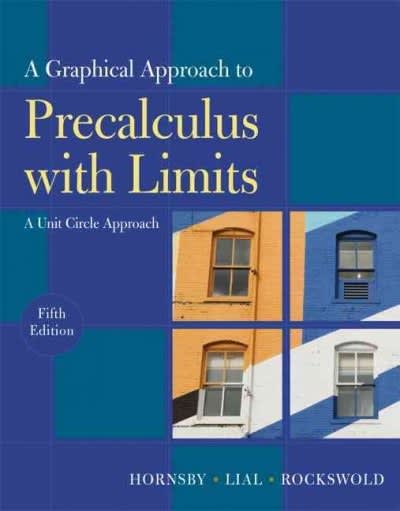Question
Based on information from the Federal Highway Administration web site, the average annual miles driven per vehicle in the United States is 13.5 thousand miles.
Based on information from the Federal Highway Administration web site, the average annual miles driven per vehicle in the United States is 13.5 thousand miles. Assume 650 miles. Suppose that a random sample of 36 vehicles owned by residents of Chicago showed that the average mileage driven last year was 13.2 thousand miles. Would this indicate that the average miles driven per vehicle in Chicago is different from (higher or lower than) the national average? Use a 0.05 level of significance. What are we testing in this problem?single meansingle proportion (a) What is the level of significance? State the null and alternate hypotheses.H0: p = 13.5; H1: p 13.5H0: = 13.5; H1: 13.5 H0: = 13.5; H1: < 13.5H0: p = 13.5; H1: p < 13.5H0: p = 13.5; H1: p > 13.5H0: = 13.5; H1: > 13.5 (b) What sampling distribution will you use? What assumptions are you making?The standard normal, since we assume that x has a normal distribution with known .The Student's t, since we assume that x has a normal distribution with known . The standard normal, since we assume that x has a normal distribution with unknown .The Student's t, since we assume that x has a normal distribution with unknown . What is the value of the sample test statistic? (Round your answer to two decimal places.) (c) Find (or estimate) the P-value. P-value > 0.5000.250 < P-value < 0.500 0.100 < P-value < 0.2500.050 < P-value < 0.1000.010 < P-value < 0.050P-value < 0.010
Step by Step Solution
There are 3 Steps involved in it
Step: 1

Get Instant Access to Expert-Tailored Solutions
See step-by-step solutions with expert insights and AI powered tools for academic success
Step: 2

Step: 3

Ace Your Homework with AI
Get the answers you need in no time with our AI-driven, step-by-step assistance
Get Started


